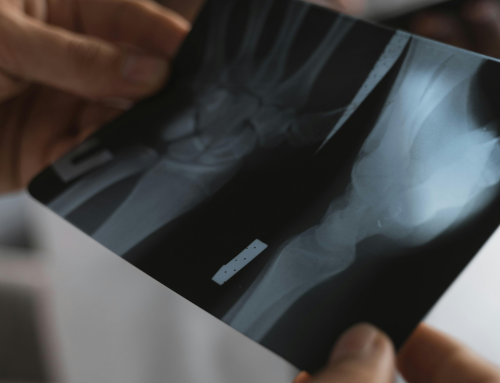Wrist fractures are among the most common injuries, particularly in Canada, where icy conditions and winter sports contribute to a high incidence of falls. Active lifestyles and participation in sports like skiing, biking, and skating increase the risk of wrist fractures.
In Canada, falls account for nearly 90% of injury hospitalizations among seniors, but younger individuals are also at significant risk due to sports-related accidents. The most common type of wrist fracture is a distal radius fracture, often resulting from a fall onto an outstretched hand. After all, most of our initial reactions during a fall would be to stop the impact, resulting in the wrist taking the brunt of it.
Understanding the causes, treatment options, and strategies for faster recovery is essential for anyone dealing with this injury. Read on to learn everything you need about wrist fractures and how you can support your healing journey.

Causes of Wrist Fractures
Wrist fractures generally occur when an individual falls and instinctively extends their hand to break the fall. The force of impact is often absorbed by the wrist, leading to fractures in one or more of the small bones in the wrist or the larger bones of the forearm, like the radius and ulna. Other common causes of wrist fractures include:
- Sports Injuries: High-impact sports, such as football, hockey, and skiing, commonly result in wrist fractures due to the falls and collisions inherent in these activities.
- Osteoporosis: For older adults, osteoporosis significantly increases the risk of fractures. Even minor falls can result in severe breaks due to the weakened state of their bones.
Understanding Wrist Fracture Types
Wrist fractures can range from simple breaks to more complex injuries that involve multiple bones and require surgical intervention. Identifying the type of fracture is crucial for determining the appropriate treatment.
Types of Wrist Fractures:
- Distal Radius Fracture: This is the most common type of wrist fracture, often occurring near the wrist joint. It is typically the result of a fall onto an outstretched hand.
- Scaphoid Fracture: Involves one of the small carpal bones in the wrist and can be challenging to detect. This fracture often requires advanced diagnostic imaging and may need surgery if the bone’s blood supply is compromised.
- Colles’ Fracture: A type of distal radius fracture where the broken fragment of the radius tilts upward, commonly resulting from falls.
Treatment Options for Wrist Fractures
Treatment for wrist fractures depends on the severity and type of the break. Early and appropriate treatment is essential to ensure proper healing and to avoid long-term complications such as reduced mobility or chronic pain.
Non-Surgical Treatments:
- Casting: A cast may be sufficient for simple fractures to immobilize the wrist and allow the bone to heal correctly. This treatment usually lasts 4-6 weeks, depending on the fracture’s severity.
- Splints: A splint may be used initially, especially if there is swelling, before transitioning to a cast.
- Closed Reduction: If the bones are misaligned, a closed reduction procedure might be necessary to reposition them without surgery, followed by casting.
Surgical Treatments:
- Internal Fixation: For complex fractures, surgery might be required to realign and stabilize the bones using metal plates, screws, or pins.
- External Fixation: In cases of significant soft tissue damage, an external device might be used to stabilize the bones from the outside.
Recovery after a Wrist Fracture
Recovering from a wrist fracture can be a lengthy process, especially for severe injuries. However, several strategies can help speed up recovery and restore function.
Physical Therapy: Doing physical therapy as soon as the cast is removed can significantly improve outcomes. Exercises to restore range of motion, strengthen muscles, and improve flexibility are crucial for a full recovery.
Nutrition: A diet rich in calcium, vitamin D, and protein supports bone healing. Incorporating dairy products, leafy greens, and lean proteins into your diet can enhance recovery.
Low-Intensity Pulsed Ultrasound (LIPUS): LIPUS technology, such as the Melmak device, can accelerate bone healing. This non-invasive treatment involves daily 20-minute sessions that help stimulate cellular activity at the fracture site, promoting faster and more effective healing.
Pain Management: Proper pain management through medications and therapeutic techniques ensures the recovery process is as comfortable as possible, allowing patients to engage fully in rehabilitation activities.
Wrist fractures, while common, require careful attention to ensure a complete and timely recovery. Understanding the causes, identifying the fracture type, and seeking appropriate treatment are the first steps to recovery. Utilizing advanced technologies like the Melmak LIPUS device can further enhance healing and reduce recovery times. Whether the fracture results from a fall, a sports injury, or age-related bone loss, taking a proactive approach to treatment and recovery will help you regain full use of your wrist and return to your normal activities.
Contact Fracture Healing to learn more about LIPUS technology and its accelerated healing process.
Have you ever experienced a wrist fracture? What was the healing process like? Share your experience with our readers in the comments below.





